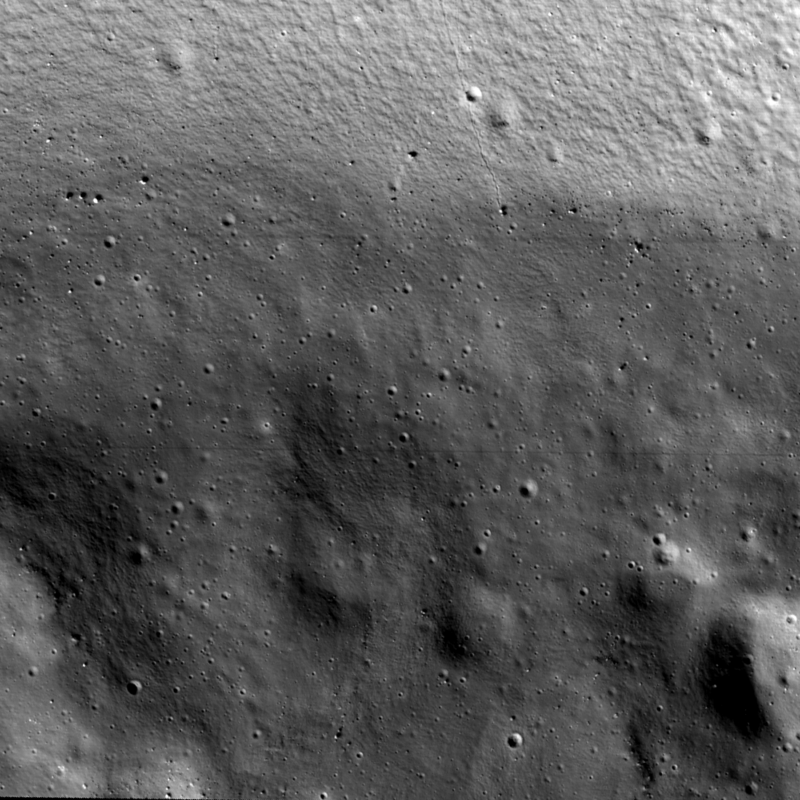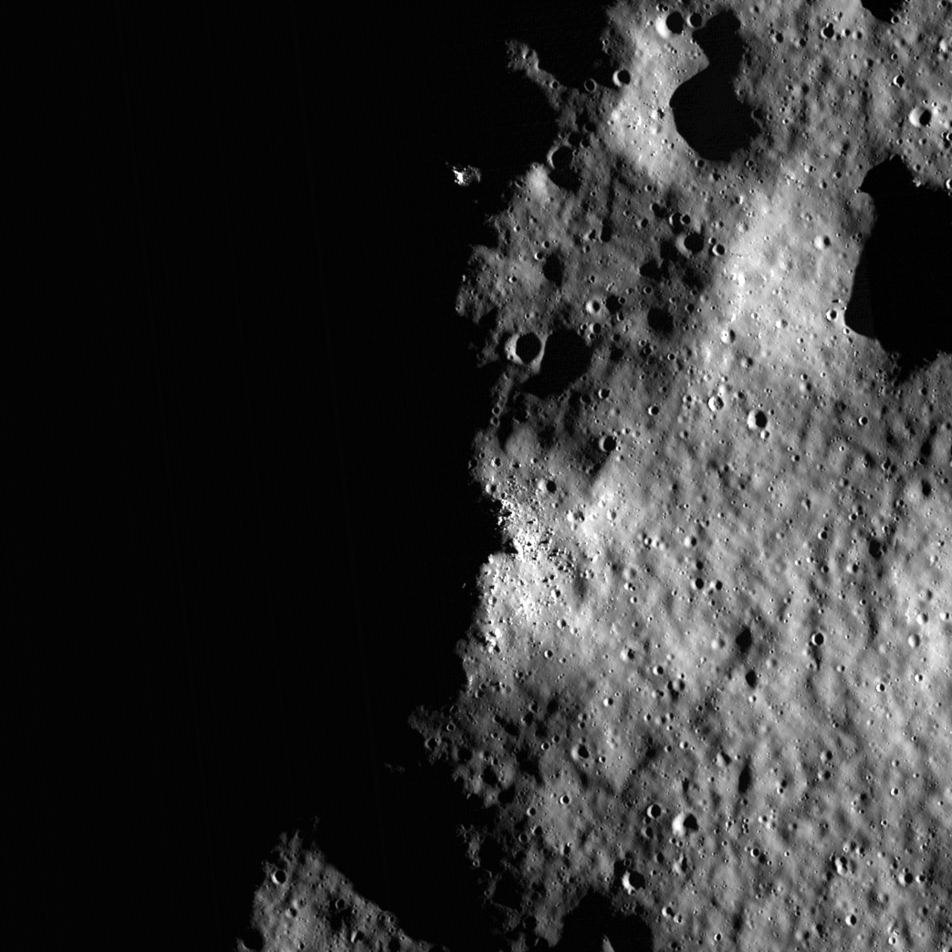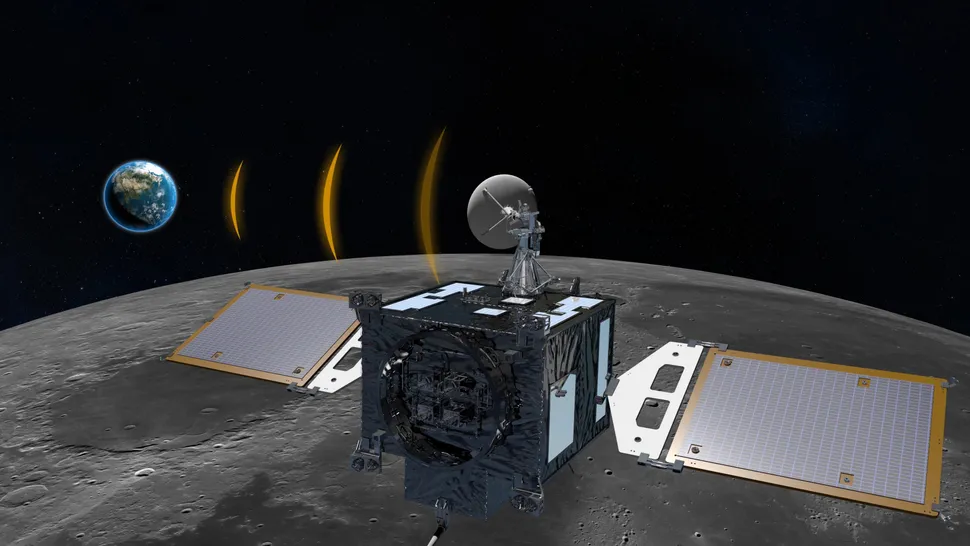
After launching on a Falcon 9 rocket in August 2022, the Korean Pathfinder Lunar Orbiter slid into orbit around the Moon last month. This was South Korea's first lunar probe, and among its chief objectives was surveying the polar regions of the Moon for resources such as water ice.
One of the six instruments carried by the half-ton satellite was a hyper-sensitive camera built by NASA called ShadowCam. The camera was designed with maximum sensitivity to light, such that it could provide images of permanently shadowed regions of the poles—which is to say, capture images of things that are inherently very dark.
Earlier this week, the ShadowCam team released its first image, which reveals a wall and the floor of Shackleton Crater near the South Pole of the Moon. At first glance, there's nothing remarkable about the photo. It looks a lot like... the Moon.
However, what you're actually looking at is an area of the Moon that lies in total darkness. Here is a photograph taken by NASA's Lunar Reconnaissance Orbiter in 2009, shortly after it reached the Moon. That black area on the left of the photo? That's the region of Shackleton Crater imaged by ShadowCam. Yeah, it's pretty phenomenal.

There are a few ways to lighten darker images. A camera can take a longer exposure to gather more photons, it can have a much wider lens opening, or it can use a higher "ISO" setting. ISO stands for “International Organization for Standardization” and basically is a setting for light sensitivity. A higher ISO setting makes for a brighter image, but increasing ISO comes with a cost. At higher settings in a darker location, an image quickly becomes noisy or grainy.
The ShadowCam instrument on board the Korean orbiter was designed to capture dim light reflected from nearby topography and to allow for high ISO settings without compromising clarity. According to the imaging team, the camera's ability to capture clear images at high sensitivity is the equivalent of increasing from ISO 100 to greater than 12,800 without increasing grain.
The result is a stunningly clear image of Shackleton Crater. The top quarter of the image shows the base of a steep wall, and the remainder of the image shows the crater floor. Note the narrow line running down the wall—the ShadowCam scientists say that's the path carved by a 5-meter boulder rolling down the crater wall and coming to rest on the floor.
This image does not show any direct evidence of water ice or other elements of interest to scientists and explorers. However, scientists did not expect to find ice in this part of Shackleton Crater, as the temperature of this location rises above the water ice stability point during the "summer" months on the Moon.
This image, and future data gathered by ShadowCam and other instruments on the Korean orbiter, will significantly improve our understanding of the polar environment. Scientists hope to use orbiter data like this—as well as from NASA's Lunar Trailblazer, which is likely to launch in 2024—to better understand where water ice and other lunar resources exist.
The ShadowCam images will be particularly useful for planning future missions as scientists seek to ground-truth this data with lunar rovers and identify areas for the Artemis human missions to explore. Finally, it's a testament to the skill of investigators to glean data from places where it is difficult to obtain and to the value of international partners with NASA working alongside scientists and engineers in South Korea.
In short, this is exploration at its finest.



3175x175(CURRENT).thumb.jpg.b05acc060982b36f5891ba728e6d953c.jpg)

Recommended Comments
There are no comments to display.
Join the conversation
You can post now and register later. If you have an account, sign in now to post with your account.
Note: Your post will require moderator approval before it will be visible.